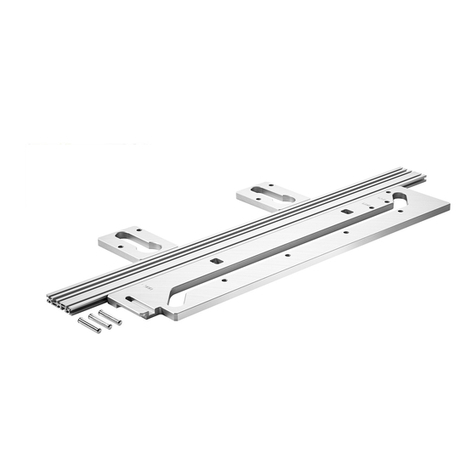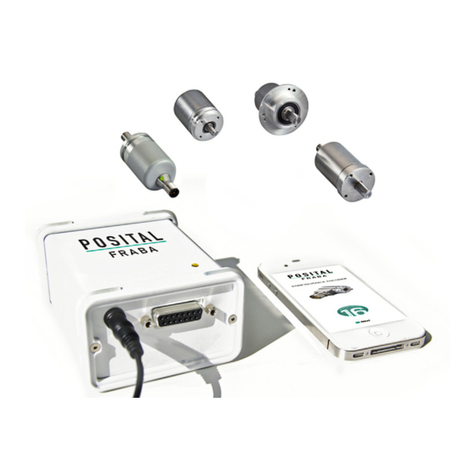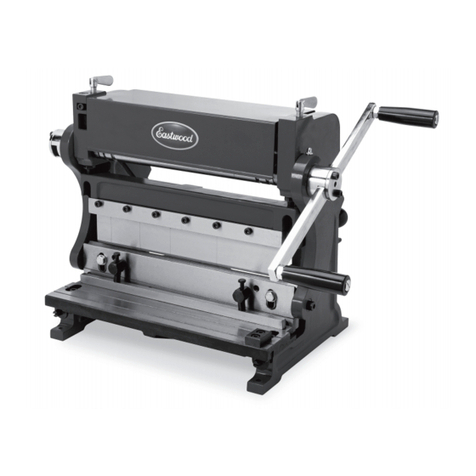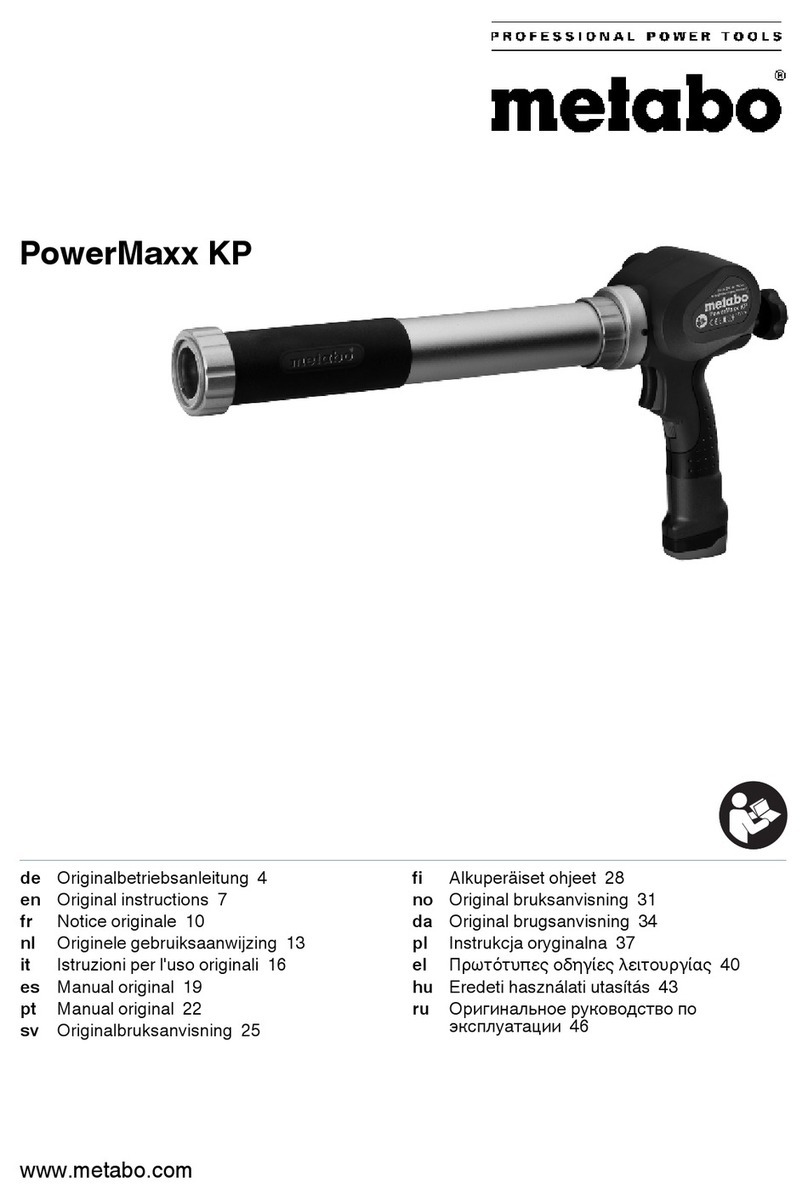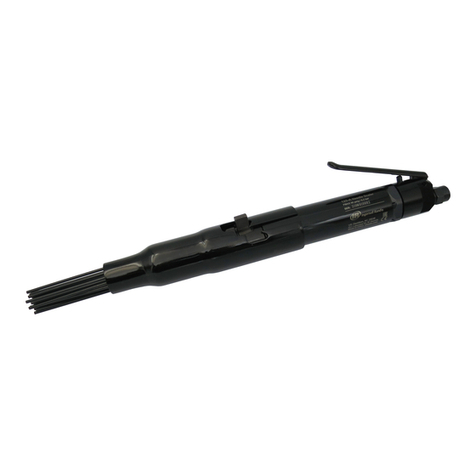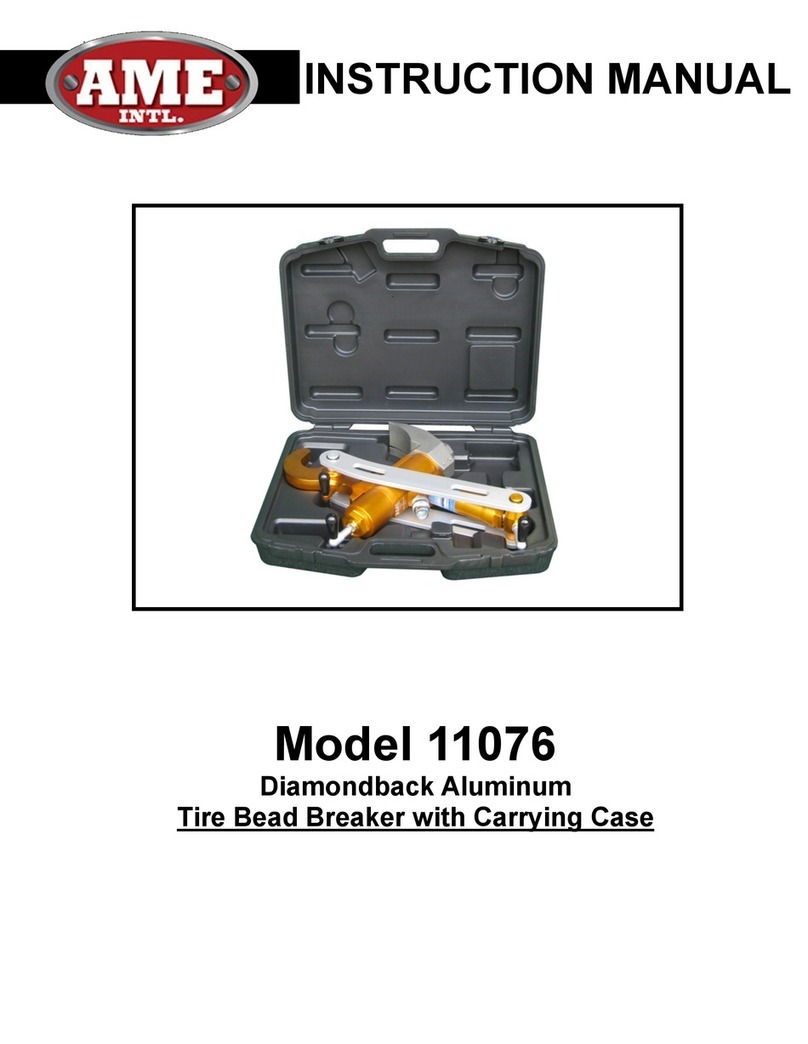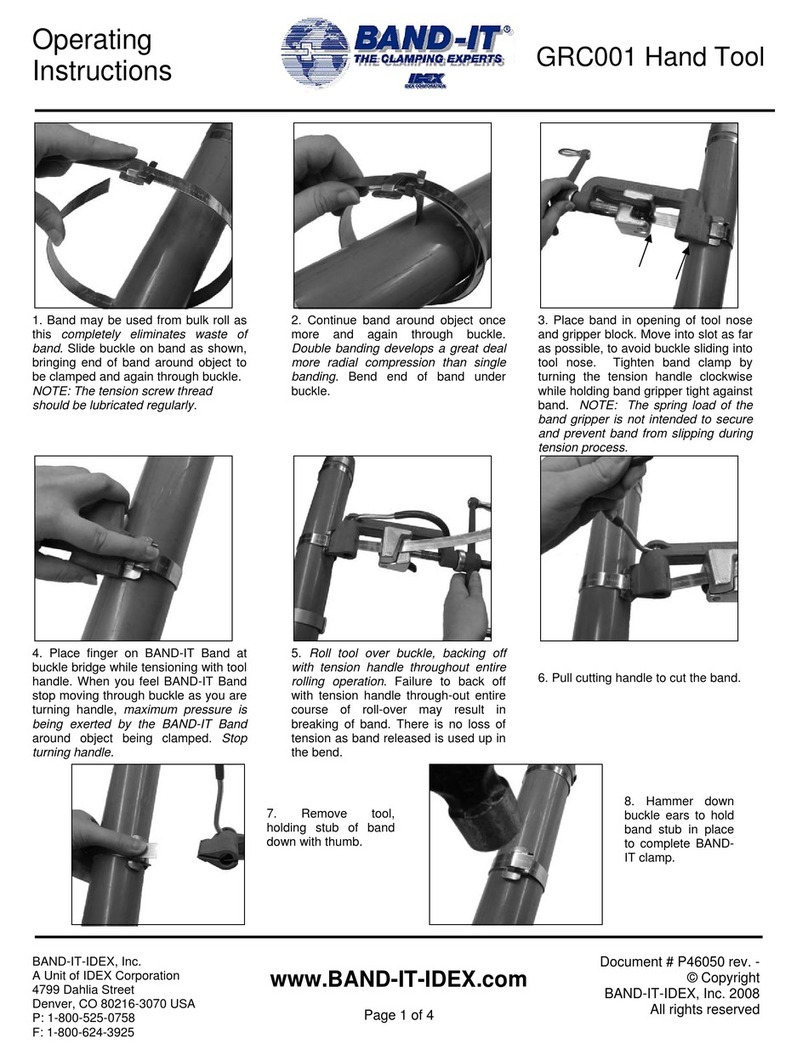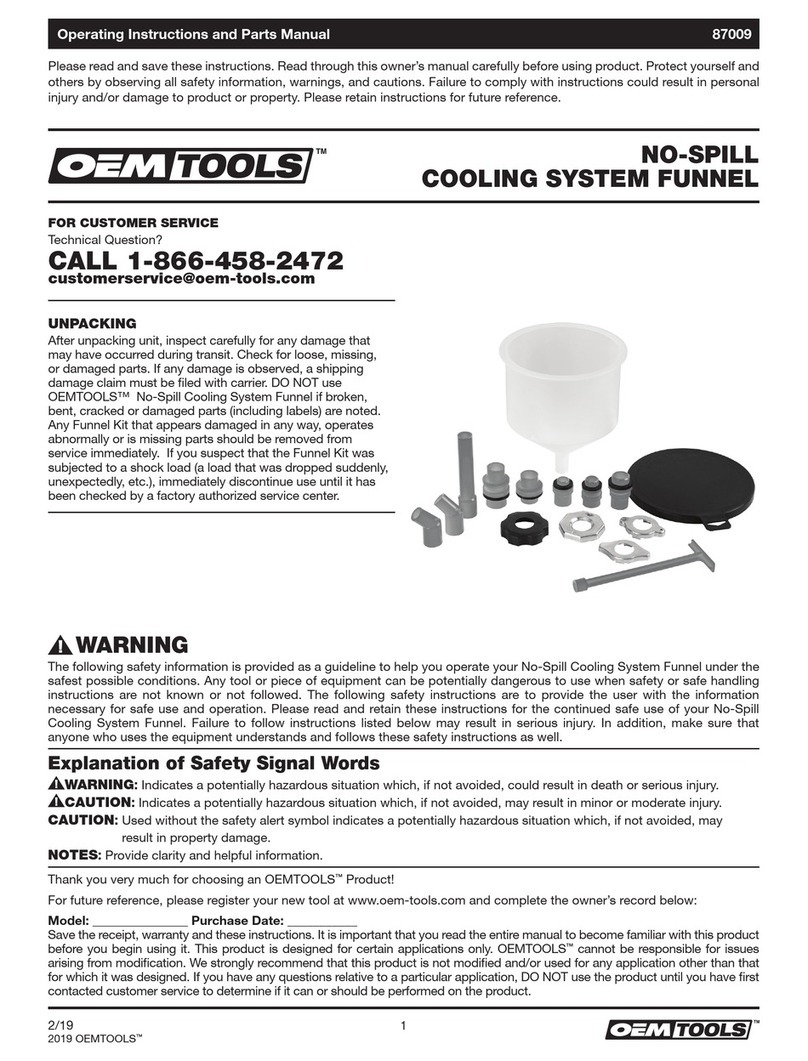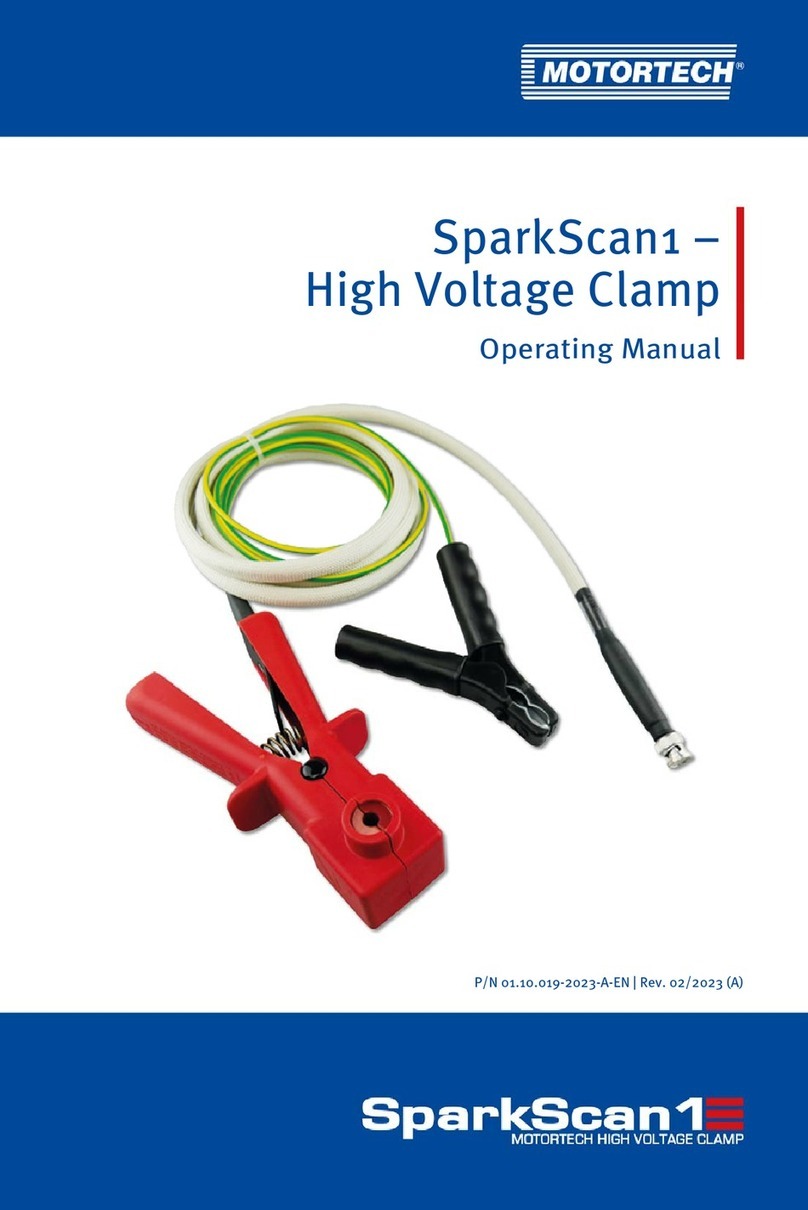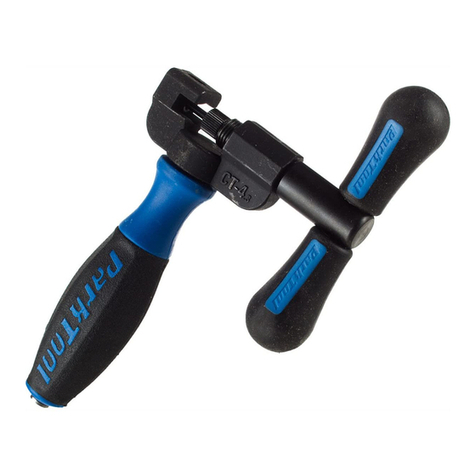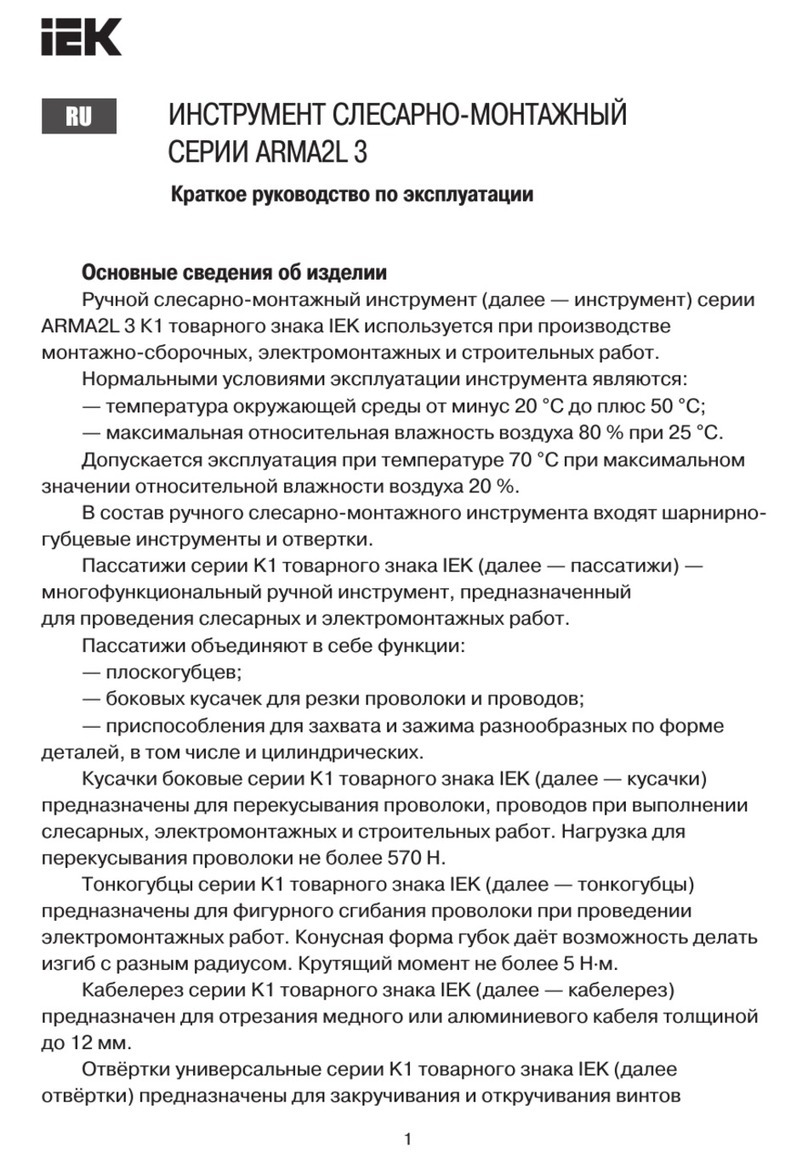Fixi AP4 User manual

MANUALE D’ISTRUZIONE
OPERATIONS MANUAL
INSERTATRICE PNEUMO-IDRAULICA
AIR - HYDRAULIC RIVETING TOOL
AP4
Air Power 4
PAG. 2-9: ITALIANO
PAG. 10-17 ENGLISH
MAIN OFFICE Via Bellardi,
40/A
10146 Torino -
(Italy)
Tel. +39 (0) 11 70.72.398 - Fa x . +39 (0) 11
70.72.521
www.fixi.it -

2
INDICE
1. ISTRUZIONI E PROCEDIMENTO GENERALE DI SICUREZZA……3
2. DESCRIZIONE DELL’ATTREZZO……………………………………….4
2.1Caratteristiche base…………………………………………………….……..4
2.2 Caratteristiche tecniche……………………………………………………....5
2.3 Utilizzo………………………………………………………………………...5
2.4 Funzionamento……………………………………………………….……....5
3. MANUTENZIONE…………………………………………………………...7
3.1 Manutenzione giornaliera…………………………………………………...7
3.2 Manutenzione settimanale…………………………………………………...7
3.3 Revisione………………………………………………………………………7
4. PEZZI DI RICAMBIO……………………………………………………….7
4.1 Ordine…….…………………………………………………………………..7
4.2 Lista dei ricambi più utilizzati... ………………………………..…….…….8
5. STOCCAGGIO…...…………………………………………………………..8
6. FUNZIONAMENTO E CONDIZIONI DI GARANZIA…………………..8
6.1 Condizioni di funzionamento………………………………………………..8
6.2 Condizioni di garanzia………………………………………………….……9
7. CERTIFICATO DI GARANZIA………………………………………….…9

3
1. ISTRUZIONI E PROCEDIMENTO GENERALE DI SICUREZZA
ATTENZIONE! Leggere attentamente tutte le istruzioni. Chiunque installi, utilizzi o faccia
manutenzione sull’attrezzo deve prima di tutto leggere questo manuale ed ha prima di tutto l’obbligo di
seguire attentamente le seguenti istruzioni di sicurezza:
- L’attrezzo non deve essere usato se non per le sue funzioni originali.
- L’attrezzo deve essere unicamente utilizzato nel modo raccomandato dal fornitore.
- Il cliente sarà pienamente responsabile degli eventuali adeguamenti effettuati sull’attrezzo, accessori e
pezzi di ricambio forniti dal fornitore o dai suoi rappresentanti commerciali. Il fornitore fornirà il suo
aiuto professionale in caso di progettazione o di esecuzione di ulteriori lavori di riparazione.
- L’attrezzo dovrà essere conservato in condizioni perfette, deve venire regolarmente controllato. Le
riparazioni dovranno essere eseguite da personale addestrato dal produttore o dal fornitore. Nel caso in
cui foste interessati all’addestramento contattare cortesemente il fornitore.
- L’attrezzo deve essere utilizzato in conformità delle istruzioni sanitarie e di sicurezza.
- Per cortesia inviare tutte le domande riguardo l’utilizzo appropriato e sicuro dell’attrezzo direttamente al
fornitore.
- Le norme di sicurezza dovranno essere seguite da tutto il personale che avrà a che fare con l’attrezzo.
- Nel manipolare l’attrezzo porre attenzione a non accenderlo accidentalmente ed evitare possibili danni.
- Durante la manutenzione o la riparazione dell’attrezzo, questo deve essere sempre disconnesso dalla sua
fonte di aria compressa.
- Rimanere sempre di fronte mentre si utilizza l’attrezzo.
- Controllare gli innesti dell’aria che siano sempre ben inseriti e che il tubo dell’aria sia in buone
condizioni.
- La pressione non deve mai superare 0,7 Mpa.
- Ossigeno o altri gas infiammabili da bottiglie a pressione non devono mai venire utilizzati come
carburante.
- Caldamente consigliamo di indossare le adeguate protezioni per gli occhi ed i guanti appositi durante
l’utilizzo dell’attrezzo.
- Se l’utilizzo dell’attrezzo dovesse superare le 8 ore giornaliere, consigliamo l’utilizzo di protezioni per le
orecchie.
- Il personale di servizio non deve indossare indumenti pendenti come legacci, capelli lunghi sciolti,
gioielli, ecc…affinché l’attrezzo non si inceppi in essi.
- Le persone che sosteranno vicino all’attrezzo dovranno seguire le sopracitate norme di sicurezza.
- Evitare qualsiasi non necessario contatto con olio idraulico, al fine di evitare qualsiasi possibile reazione
allergica della pelle.
- L’attrezzo è equipaggiato con magnete permanente, il polo magnetico potrebbe influenzare macchine
elettroniche e meccaniche. Quindi è necessario mettere in guardia sulle possibilità di influenza sul
funzionamento di apparecchi elettronici (es: pacemakers per il cuore, pompe per insulina, ecc…) e
dell’effetto fatale per chi utilizza i sopracitati apparecchi. Il polo magnetico può inoltre danneggiare
informazioni o applicazioni magnetiche (audio e video cassette, dischetti, carte di credito, ecc…)
rendendole inutilizzabili. Utilizzando e caricando l’attrezzo, mantenere la dovuta distanza con i suddetti
elettrodomestici sensibili, la distanza consigliata è di 0,5 m.
- L’attrezzo non deve essere utilizzato in ambienti a rischio di esplosione.
- L’attrezzo dovrà essere smaltito secondo la norma sui rifiuti nr. 185/01.

4
2. DESCRIZIONE DELL’ATTREZZO
2.1 CARATTERISTICHE DI BASE
2.2 CARATTERISTICHE TECNICHE
PESO KG. 1,65
PRESSIONE 0,5-O,7 MPa
FORZA DI TRAZIONE A 0,6 MPa 18,5 KN
CONSUMO DELL’ARIA 1,5 L/COLPO
COLPO IN MASSIMA OPERATIVITA’ 7MM
ALTEZZA 270 MM
LUNGHEZZA 285 MM
LARGHEZZA (ANGOLAZIONE DELLA VALVOLA) 99 MM
Asta filettata
Testina e contro-dado
Sistema di sostituzione rapido
Ugello
Regolatore della forza
Ghiera dell’aria girevole
Bottone

5
2.3 UTILIZZO
La rivettatrice ad aria compressa viene utilizzata per rivettare:
- inserti filettati femmina M3-M12 (acciaio)
- inserti filettati maschi M4-M8 (acciaio)
2.4 FUNZIONAMENTO
L’attrezzo viene fornito di con asta e testina per inserti M8. Per la rivettatura di rivetti con dimensioni differenti
sarà necessario sostituire asta e testina e modificare la sistemazione e la regolazione di base dell’attrezzo come
segue:
1) Allentare il contro dado della testina /figura 1/
2) Svitare la testina dall’ugello /figura 1/
3) Svitare l’asta dal manicotto.
4) Scegliere asta e testina in base alle dimensioni del rivetto, come da seguente grafico:
Rivetto Asta filettata Testina
M3 D-1400103 S-1400303
M4 D-1400104 S-1400304
M5 D-1400105 S-1400305
M6 D-1400106 S-1400306
M8 D-1400108 S-1400308
M10 D-1400110 S-1400310
M12 D-1400112 S-1400312
5) Avvitare l’asta filettata al manicotto in modo che le parti piatte degli esagoni coincidano.
6) Far scivolare la testina verso l’esagono dell’asta filettata.
7) Avvitare la testina all’ugello.
8) Disporre la testina come segue:
- Per inserti filettati femmina: l’inserto deve essere avvitato per l’intera lunghezza della filettatura all’asta e
la parte anteriore dell’inserto deve appoggiare sulla testina. A quel punto fissare le testina con il
controdado.
- Per inserti filettati maschi: disporre la testina in modo che vi sia 1 cm di spazio tra la parte esterna
dell’asta e la parte interna della testina. Fare come segue: Avvitare la testina fino contro l’asta e poi
svitare per uno o due giri. Fissare la posizione della testina con il controdado.

6
9) Disporre la forza come segue:
Inserto M3 M4 M5 M6 M8 M10 M12
Rigatura 1,5 2 2,5 3 4 5 6
- Per disporre la forza girare il manicotto di copertura dell’ugello.
10) Connettere l’attrezzo alla fonte di aria compressa.
11) Spingere l’inserto contro l’asta filettata, esso si avviterà automaticamente all’asta.
12) Disporre il rivetto nel foro.
13) Spingere il grilletto ed il rivetto verrà fissato.
14) Liberare il grilletto, l’asta filettata si sviterà dal rivetto (se non si sviterà completamente, utilizzare il
pulsante /figura 1/).
15) Controllare il rivetto fissato:
- Se il rivetto non è completamente fissato sarà necessario incrementare la forza.

7
- Se il rivetto è fissato eccessivamente, risulterà una eccessiva deformazione del rivetto e sarà difficilmente
svitabile dall’asta filettata; in questo caso sarà necessario ridurre la forza.
16) L’attrezzo, sistemato secondo il metodo sopraindicato, è pronto per l’utilizzo.
3 MANUTENZIONE DELL’ATTREZZO
Per la manutenzione dell’attrezzo è necessario disconnetterlo dalla fonte di aria compressa!!
3.1 MANUTENZIONE GIORNALIERA
Giornalmente, prima della messa in opera dell’attrezzo, versare alcune gocce di olio (raccomandiamo olio
idraulico HYSPIN AWHM 32 CASTROL) nella presa d’aria dell’attrezzo, solo se l’equipaggiamento di
lubrificazione non è direttamente connesso all’impianto d’aria. Tale operazione va effettuata ogni 3 ore di lavoro
effettive.
Controllare che l’aria non fuoriesca, in caso contrario i raccordi danneggiati o le giunture devono essere sostituite.
Controllare che l’asta filettata e la testina siano sempre ben fissate.
Assicurarsi che i fori per il flusso d’aria siano liberi.
3.2 MANUTENZIONE SETTIMANALE
Smontare l’asta filettata e la testina seguendo le istruzioni del capitolo 2.4. Tutte le parti smontate devono essere
pulite e revisionate. Le parti smontate devono essere reinstallate come da istruzioni al capitolo 2.4.
3.3 REVISIONE
La revisione va effettuata dopo 500.000 colpi o ogni 3 anni. L’intero attrezzo deve essere smontato e tutte le parti
otturate e consumate devono essere cambiate. Questo deve essere eseguito unicamente dagli ingegneri di servizio
o da personale istruito dal produttore o dal fornitore.
4 PEZZI DI RICAMBIO
4.1 ORDINE
I pezzi di ricambio devono essere ordinati al produttore o al fornitore.
La lista deve contenere:
a) numero seriale dell’attrezzo
b) codice dei pezzi di ricambio
c) numero dei pezzi
Potete utilizzare il seguente indirizzo per ordinare i pezzi di ricambio: [email protected]

8
4.2 LISTA DEI RICAMBI PIU’ UTILIZZATI
DESCRIZIONE CODICE
Asta filettata per inserti M3 D-1400103
Asta filettata per inserti M4 D-1400104
Asta filettata per inserti M5 D-1400105
Asta filettata per inserti M6 D-1400106
Asta filettata per inserti M8 D-1400108
Asta filettata per inserti M10 D-1400110
Asta filettata per inserti M12 D-1400112
Testina M3 S-1400303
Testina M4 S-1400304
Testina M5 S-1400305
Testina M6 S-1400306
Testina M8 S-1400308
Testina M10 S-1400310
Testina M12 S-1400312
Ugello S-1400600
Manicotto D-1400400
5 STOCCAGGIO
La tirainserti va conservata nel contenitore di spedizione in un ambiente con umidità al 70% e temperatura che
varia dai + 5°C ai + 40°C, lontana da aggressivi vapori di sale e acidi.
6 FUNZIONAMENTO E CONDIZIONI DI GARANZIA
Si raccomanda di utilizzare aria compressa modificata per un funzionamento ottimale dell’attrezzo.
Con aria compressa modificata si intende aria atmosferica compressa priva di particelle solide o di acqua, ridotta
per una pressione ottimale e lubrificata con olio anticorrosivo.
6.1 CONDIZIONI DI FUNZIONAMENTO
Dati di funzionamento: per avere un attrezzo affidabile e sicuro, bisogna seguire le seguenti istruzioni.
Immediatamente prima di lavorare con l’attrezzo: controllare sempre valvola di regolazione dell’aria (assettata al
massimo livello, pressione in uscita 0,7 MPa), filtro dell’aria e lubrificazione. Livello di pressione sonora
LpAI=….Db superiore a 85 Db, in continua operatività dell’attrezzo si raccomanda di indossare protezione per le
orecchie. Medio effettivo valore della vibrazione dell’accelerazione AVW,T=…..m.s.-2.

9
6.2 CONDIZIONI DI GARANZIA
Durante il periodo di garanzia, il cliente non è autorizzato a fare interventi sull’attrezzo, eccetto quelli concessi
dal produttore (2.3-2.4). Il cliente deve mostrare il certificato di garanzia dell’attrezzo o la ricevuta, quando
ricorre ad una riparazione in garanzia. La garanzia ha validità 24 mesi dalla data dell’acquisto confermata sul
Certificato di garanzia, se nel contratto d’acquisto non è menzionata nessun’altra clausola.
7 CERTIFICATO DI GARANZIA
CLIENTE:………………………………………………………………
firma e timbro
FORNITORE:…………………………………………………………
firma e timbro
NUMERO SERIALE DELL’ATTREZZO:
Il periodo di garanzia di 24 mesi è valido dalla data d’acquisto se i seguenti punti
verranno osservati:
1. Istruzioni generali di sicurezza
2.4. Funzionamento dell’attrezzo
3.1. Manutenzione giornaliera
3.2. Manutenzione settimanale
5. Stoccaggio
7. Funzionamento e condizioni di garanzia
La garanzia non è valida per le parti menzionate in 4.2

CONTENT :
1. GENERAL SAFETY INSTRUCTIONS AND POLICY………........................................... 11
2. DESCRIPTION OF THE TOOL ................................................................................................12
2.1. Basic characteristics ..............................................................................................................12
2.2. Ratings .....................................................................................................................................12
2.3. Application .............................................................................................................................13
2.4. Operation of the tool ..............................................................................................................13
3. TOOL MAINTANANCE ............................................................................................................13
3.1. Daily maintanance ..................................................................................................................14
3.2. Weekly maitanance................................................................................................................14
3.3. Overhaul ................................................................................................................................14
4. SPARE PARTS ...........................................................................................................................15
4.1. Order........................................................................................................................................15
4.2. List of the parts with easy wearability.................................................................................16
5. STORAGE ....................................................................................................................................16
6. OPERATING AND GUARANTY CONDITIONS ....................................................................16
6.1. Operating conditions ..............................................................................................................17
6.2. Guaranty conditions ..............................................................................................................17
7. CERTIFICATION OF WARRANTY…...…………………………………...…………….......17
10

1. GENERAL SAFETY INSTRUCTIONS AND POLICY
ATTENTION! Read all the instructions carefully. Everyone who will install, operate or maintain the tool must
read this manual at first and is obliged to follow these safety instructions:
•
The tool may not be used for other than its original purpose.
•
The tool must be only operated in a way recommended by the producer
•
The customer is fully responsible for any adjustments made on the tool, accessories or spare
parts supplied by producer or its sales representatives. The producer provides professional help in case
of planning or execution of further repair work.
•
The tool must be maintained in the perfect condition, it has to be checked regularly. The repairs must be
carried over by employees trained by the producer or supplier. In case you are interested in the training,
please contact the producer.
•
The tool must be operated in accordance with sanitary and safety instructions.
•
Please, address all your questions about appropriated and safety operation of the tool directly to the
producer.
•
Safety instructions must be obeyed by all the workers, who will operate with the tool.
•
While handling the tool, be careful not to turn on the tool by accident and avoid possible damages.
•
While maintaining or repairing the tool, it always must be disconnected from the source of pressure air.
•
Always remain opposite while using the tool.
•
Always check the air inlets, make sure that they are blocked and that the inlet hose is in a good
condition.
•
Operating pressure must not exceed 0,7 MPa.
•
Oxygen or other flammable gases from pressure bottles must not be used as a fuel.
•
We strongly recommend wearing eye protection and work-gloves while operating the tool.
•
If the continuous operation of the tool is longer than 8 hours a day, we recommend using ear protection.
•
The operating staff must not wear loose parts of clothes, such as ties, long hair, jewellery etc., so that the
tool cannot catch them.
•
The people, who will be near the tool should obey the same safety instructions.
•
Avoid all unnecessary contact with hydraulic oil, to obviate possible allergic reaction of the skin.
•
The tool is equipped with permanent magnet, the magnetic pole may influence electronic and even some
mechanic machines. So it is necessary to warn about the possibility of the influence on the operation
of electronic implants (e.g. pacemakers, insulin pumps etc.) with potential fatal effect for the users of
these implants. The magnetic pole may also damage information on magnetic appliances (audio and
video cassettes, diskettes, credit cards etc.) and it can destroy them forever. W hile using (and
storing)the tool, please, keep distance with these sensitive appliances, in this case 0,5 m is
considered as save distance.
•
The tool should not be used in potentially explosive environments.
•
The tool should be disposed according to the waste act nr.185/01
11

2. DESCRIPTION OF THE TOOL
2.1. Basic characteristics
pic. 1
2.2. Ratings
Weight..............................................1,65 kg
Operating pressure..........................0,5 - 0,7 MPa
Drawbar pull/0,6 MPa......................18,5 kN
Air consumption...............................1,5 l / stroke
Max. operating stroke ......................7 mm
Height................................................270 mm
Length ..............................................285 mm
Width (angle valve)…………………..99mm
12

W
2.3. Application
Air-hydraulic riveting tool is intended for riveting:
- nut rivets M3 – M12 (steel)
- screw rivets M4 – M8 (steel)
2.4. Operation of the tool
The tool is equipped with a nose-piece and screw-plug gauge for nut rivet M8. For riveting of rivets with a
different dimension it is necessary to exchange the nose-pieces and screw plug gauges and change basic
set up and regulation of the tool as following:
1) Loosen the back nut of the nose-piece /pic. 1/
2) Screw out the nose-piece from the nozzle /pic. 1/
3) Screw out the screw-plug gauge from the sleeve
4) Choose appropriate nose-piece and screw-plug gauge according to the dimension of the rivet, see
the following chart:
Rivet
Nose-piece and screw-plug gauge
Part nr.
M3
Screw-plug gauge for nut rivets M3
D-1400103
Nose-piece for screw-plug gauge M3
S-1400303
M4
Screw-plug gauge for nut rivets M4
D-1400104
Nose-piece for screw-plug gauge M4
S-1400304
M5
Screw-plug gauge for nut rivets M5
D-1400105
Nose-piece for screw-plug gauge M5
S-1400305
M6
Screw-plug gauge for nut rivets M6
D-1400106
Nose-piece for screw-plug gauge M6
S-1400306
M8
Screw-plug gauge for nut rivets M8
D-1400108
Nose-piece for screw-plug gauge M8
S-1400308
M10
Screw-plug gauge for nut rivets M10
D-1400110
Nose-piece for screw-plug gauge M10
S-1400310
M12
Screw-plug gauge for nut rivets M12
D-1400112
Nose-piece for screw-plug gauge M12
S-1400312
5) Screw the screw-plug gauge into the sleeve (to the backstop) and then turn it back, so that the
flats of the hexagons of the screw-plug gauge and sleeve are matching.
6) Slide on the nose-piece to the hexagons of the screw-plug gauge and sleeve.
7) Screw on the nose-piece to the sleeve
8) Set-up the nose-piece:
- for nut rivet – The nut rivet has to be screwed on the whole length of the thread on he screw-
plug gauge and the front of the nut rivet has to lean on the nose-piece. Fasten the position of the nose-
piece with a back nut.
13

- for screw rivet - Set-up the nose-piece so that there is a cca 1 cm space between the outer side of
the screw rivet and inner side of the nose-piece. Do it as following: Screw the nose-piece to the back- stop
to the screw-plug gauge and then unscrew it for one or two rounds. Fasten the position of the nose- piece
with the back nut.
9) Set-up the basic stroke as following:
Rivet
M 3
M 4
M 5
M 6
M 8
M10
M12
Stroke (mm)
1,5
2
2,5
3
4
5
6
Number of visible marks
on the scale
5
5
4
4
3
2
1
- To set-up the stroke turn the covering sleeve of the nozzle, values of the stroke are indicated be- tween
the scale divided into 1 mm values on the body of he nozzle and the edge of the covering sleeve of the
nozzle.
- Maximum stroke is set-up, when the first scale line covers the edge of the covering sleeve of the noz-
zle, see the following picture:
- Minimum stroke is set-up, when the last scale line covers the edge of the covering sleeve of the noz-
zle, see the following picture:
10) Connect the tool to the source of the compressed air and turn the versatile air supply, so that it will
not restrain from riveting.
11) Put the rivet on the mandrel and push towards the nose-piece, this will screw automatically on the rivet
12) Put the screwed rivet into the prepared hole
13) Push the trigger and the rivet will clinch
14) Relieve the trigger, the screw-plug gauge will unscrew from the rivet (if it is not fully unscrewed, use
the button /pic. 1/)
15) Check the clinched rivet
- if the rivet is not fully fastened it is necessary to increase the stroke
14

- if the rivet is too fastened, it will result excessively deformed and hard to unscrew from the screw
plug gauge, in this case it is necessary to decrease the stroke
16) Check the setting-up of the nose-piece according to the step 8)
17) The tool, which is set up according to the methodology above
mentioned, is ready for riveting.
3. TOOL MAINTENANCE
For the maintenance of the tool it is necessary to disconnect it from the source of the
compressed air !!!
3.1. Daily maintenance
Before start working, pour on a daily basis several drops of oil (we recommend hydraulic oil HYSPIN
AWHM 32
CASTROL) to the air inlet of the tool, only if the lubricating equipment is not connected to the air
distribution. If the tool works continuously, it is necessary to disconnect the air hose from the main air
supply. This operation shall be carried out every 2-3 hours a day.
Check, that the air does not escape, otherwise, the damaged hose or joints must be replaced.
If the pressure regulator is not equipped with filter, blow-over the air hose, before you connect it to the tool,
so that you get rid off water and foreign matters. If the pressure regulator is equipped with a filter, dry it.
Check if there is a right nose-piece and screw-plug gauge corresponding to the dimension of the rivet and if
the all threads are fastened.
Check, if the holes for the air stream are free.
3.2. Weekly maintenance
Weekly maintenance means that the worn-out or dysfunctional parts are changed. Dismantle the nose-piece
and screw-plug gauge according to the chapter 2.4., 1) and 3). All dismantled parts should be cleaned and
visually checked – especially the screw-plug gauges and nose-piece. Dismantled parts should be
reinstalled according to the chapter 2.4., 5) to 7) including setting up according to the point 8).
3.3. Overhaul
The overhaul is carried out always after 500 000 strokes or once every three years. The whole tool should
be dismantled and all the sealings and worn-out parts must be changed. This must be done exclusively by
engineers or employee trained by the producer or supplier.
4. SPARE PARTS
4.1. Order
The spare parts must be ordered to producer or to the supplier:
The order must contain:
a) serial number of the tool
b) number of the spare part
c) number of pieces
d) name and address of your company
e) your tax number
15

4.2. List of the parts with easy wearability
Name
Spare part nr.
Screw-plug gauge for nut rivets M3
D-1400103
Screw-plug gauge for nut rivets M4
D-1400104
Screw-plug gauge for nut rivets M5
D-1400105
Screw-plug gauge for nut rivets M6
D-1400106
Screw-plug gauge for nut rivets M8
D-1400108
Screw-plug gauge for nut rivets M10
D-1400110
Screw-plug gauge for nut rivets M12
D-1400112
Nose-piece for screw-plug gauge M3
S-1400323
Nose-piece for screw-plug gauge M4
S-1400324
Nose-piece for screw-plug gauge M5
S-1400325
Nose-piece for screw-plug gauge M6
S-1400326
Nose-piece for screw-plug gauge M8
S-1400328
Nose-piece for screw-plug gauge M10
S-1400330
Nose-piece for screw-plug gauge M12
S-1400332
Nozzle
S-1400600
Sleeve
D-1400400
5. STORAGE
Air-hydraulic tool must be kept i n th e s h ippin g con taine r in an in the environment with average
humidity to 70% and average temperature which varies from +5oC to +40oC, far from aggressive salt steams
and acids and leys.
6. OPERATING AND GUARANTY CONDITIONS
We recommend using modified compressed air for optimal function of the tool.
By modified compressed air is meant compressed atmospheric air without any solid particles or water, re-
duced for optimal pressure and lubricated with anticorrosive oil.
6.1. Operating conditions
Operating data: if you want the tool to work safely and reliably, you must follow the above
instructions. Immediately before operating the tool: always check the air regulating valve (set up to the
max. level, outlet pressure 0,7
MPa), air filter and lubricating. Although the level of sound pressure LpAl does not exceed 85 dB, in
continuous operation of the tool we recommend the worker to wear ear protection. Average effective value
16

h
v
,8h
of vibration acceleration a =1,5 m.s
-2
. The trigger allows safety operation of the tool by control force
max.10 N < 50 N without releasing the trigger, which is in accord with hygienic regulation.
6.2. Guaranty conditions
During the guarantee period, the customer is not allowed to do any interventions to the tool, except
those allowed by the producer. The customer must show t h e confirmed Certificate of warranty
of the tool, or receipt when applying for a g uarantee repair. The guarantee is provided for 12
months from the date of sale confirmed on the Certificate of warranty, if the contract of purchase
does not mention any other terms.
CUSTOMER:
Certificate of warranty
……………………………………………………
company stamp or address
SELLER:
……………………………………………………
stamp, date and signature
SERIAL NUMBER OF THE TOOL :
The guarantee period 1
2 months is valid from the date of sale if the following points are
observed:
1. General safety instructions and policy
2. 4. Operation of the tool
3. 1. Daily maintenance
3. 2. Weekly maintenance
5. Storage
7. Operating and warranty conditions
The guarantee is not valid for the parts mentioned in 4.2
17
This manual suits for next models
1
Table of contents
Languages:

